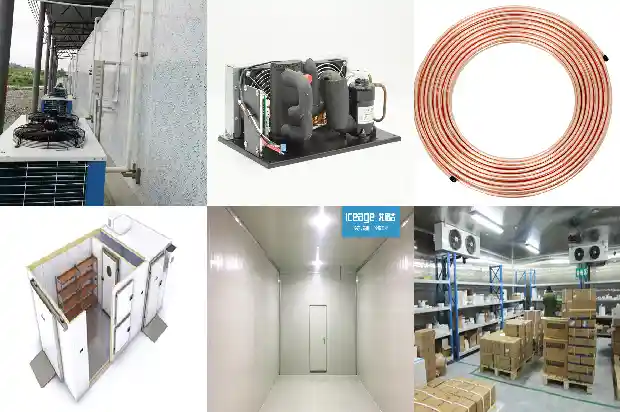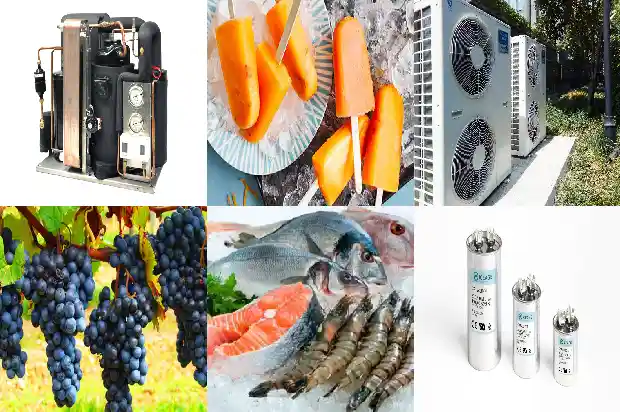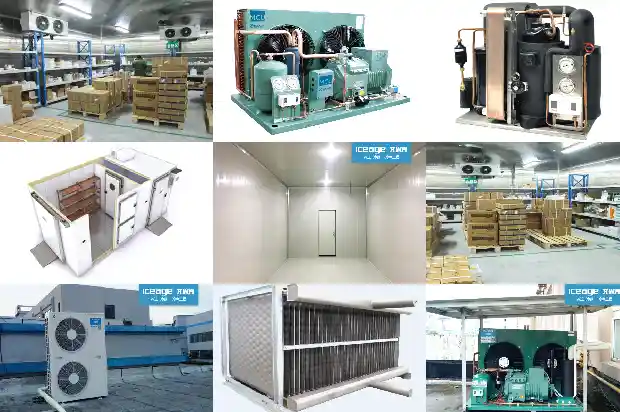Is the Compressor in the Cold Storage Overheating in Summer? Find the Reasons Here!
2025-03-14
The compressor should not have overheating phenomena such as high motor temperature and high exhaust steam temperature during normal operation within the usage range. Compressor overheating is an important fault signal, indicating that there are relatively serious problems in the refrigeration system. The reasons can be found from the following aspects: high return gas temperature, large motor heating amount, high compression ratio, high condensing pressure, improper refrigerant selection, etc.
- High return gas temperature
The high or low return gas temperature is relative to the evaporation temperature. In order to prevent liquid return, a return gas superheat of 20°C is generally required for the return gas pipeline.
If the insulation of the return gas pipeline is not good, the superheat will be far higher than 20°C.
The higher the return gas temperature, the higher the cylinder suction temperature and the exhaust temperature. For every 1°C increase in the return gas temperature, the exhaust temperature will increase by 1 to 1.3°C. - Motor heating
For the return gas cooled compressor, the refrigerant vapor is heated by the motor when flowing through the motor cavity, and the cylinder suction temperature is increased again. The heat generation of the motor is affected by power and efficiency, and the power consumption is closely related to the displacement, volumetric efficiency, working conditions, frictional resistance, etc.
For the return gas cooled semi-hermetic compressor, the temperature rise range of the refrigerant in the motor cavity is roughly between 15 and 45°C. In the air-cooled compressor, the refrigerant does not pass through the winding, so there is no problem of motor heating. - High compression ratio
The exhaust temperature is greatly affected by the compression ratio. The larger the compression ratio, the higher the exhaust temperature.
Reducing the compression ratio can significantly reduce the exhaust temperature. Specific methods include increasing the suction pressure and reducing the exhaust pressure.
The suction pressure is determined by the evaporation pressure and the resistance of the suction pipeline. Increasing the evaporation temperature can effectively increase the suction pressure, rapidly reduce the compression ratio, and thus reduce the exhaust temperature.
Some users one-sidedly believe that the lower the evaporation temperature, the faster the cooling speed. In fact, this idea has many problems. Although reducing the evaporation temperature can increase the freezing temperature difference, the refrigeration capacity of the compressor decreases, so the freezing speed is not necessarily fast. Moreover, the lower the evaporation temperature, the lower the refrigeration coefficient, while the load increases, the running time is extended, and the power consumption will increase.
Reducing the resistance of the return gas pipeline can also increase the return gas pressure. Specific methods include timely replacing the dirty and blocked return gas filter, and minimizing the length of the evaporator pipe and the return gas pipeline as much as possible. In addition, insufficient refrigerant is also a factor for low suction pressure. The refrigerant should be replenished in time after leakage. Practice shows that reducing the exhaust temperature by increasing the suction pressure is simpler and more effective than other methods.
The main reason for the too high exhaust pressure is the too high condensing pressure. Insufficient heat dissipation area of the condenser, fouling, insufficient cooling air volume or water volume, too high cooling water or air temperature, etc. can all lead to too high condensing pressure. It is very important to select an appropriate condensing area and maintain a sufficient flow rate of the cooling medium.
The designed operating compression ratio of high-temperature and air-conditioning compressors is relatively low. When used for freezing, the compression ratio is increased exponentially, the exhaust temperature is very high, and the cooling cannot keep up, resulting in overheating. The compressor should be prevented from being used beyond the scope, and the compressor should be made to work at the possible minimum compression ratio. In some low-temperature systems, overheating is the primary cause of compressor failure.
- Back expansion and gas mixing
After the suction stroke starts, the high-pressure gas remaining in the clearance of the cylinder will have a back expansion process. After the back expansion, the gas pressure returns to the suction pressure, and the energy consumed for compressing this part of the gas is lost during the back expansion. The smaller the clearance, on the one hand, the smaller the power consumption caused by the back expansion, and on the other hand, the larger the suction volume, so the energy efficiency ratio of the compressor is greatly increased.
During the back expansion process, the gas contacts and absorbs heat from the high-temperature surfaces of the valve plate, the top of the piston and the top of the cylinder. Therefore, the gas temperature will not drop to the suction temperature at the end of the back expansion.
After the back expansion ends, the real suction process begins. After the gas enters the cylinder, on the one hand, it mixes with the back-expanded gas, and the temperature rises; on the other hand, the mixed gas absorbs heat from the wall surface and the temperature rises. Therefore, the gas temperature at the beginning of the compression process is higher than the suction temperature. However, due to the very short back expansion process and suction process, the actual temperature rise is very limited, generally less than 5°C.
Back expansion is caused by the clearance of the cylinder, which is an unavoidable disadvantage of the traditional piston compressor.
If the gas in the exhaust hole of the valve plate cannot be discharged, there will be back expansion.
- Compression temperature rise and refrigerant types
The thermophysical properties of different refrigerants are different, and the increase in exhaust temperature after experiencing the same compression process is different. Therefore, different refrigerants should be selected for different refrigeration temperatures.
If the root cause of the compressor overheating lies in the refrigeration system, the problem can only be solved by starting from improving the design and maintenance of the refrigeration system. Replacing with a new compressor cannot fundamentally eliminate the overheating problem.
Related Articles
- Reasons and Hazards of Liquid Hammer in Refrigeration Compressors
- Abnormal Phenomena and Causes during the Operation of Reciprocating Refrigeration Compressors
- Analysis of the Causes of Frost Formation at the Suction Port of the Refrigeration Compressor
- The horsepower of an air conditioner originally refers to the input power, including that of the compressor
- The Use and Common Maintenance Methods of Refrigeration Compressors
- Master the Compressor Replacement of the Multi-connected Unit System in Ten Steps
- Is the Compressor of the Cold Storage Unit Overheating? Find the Reasons Here!
- Common Fault Causes of Totally Enclosed Refrigeration Compressors
- Common Fault Causes and Replacement of Multi-connected Unit Compressors
- Why Does the Compressor Always Trigger the Overheat Protection?
- Reasons for Compressor Oil Deterioration and Oil - adding Operations
- Screw Compressor Units: Principles, Design and Selection - Essential Guide for Refrigeration Beginners
- Analysis of Causes for Compressor Liquid Hammer, Overheating and Pre - heating
- Oil Cooling Methods and Oil - changing Operation Procedures for Screw Compressors
- Have You Encountered the Three Common Problems of Refrigeration Compressors?
- What to Do if the Compressor of a Frozen and Refrigerated Display Cabinet Runs but the Refrigeration Effect Is Poor?
- What to Do if the Compressor of the 【Refrigerated and Frozen Display Cabinet】 Unit Fails to Start?
- Precautions for Using Rotary Refrigeration Compressors
